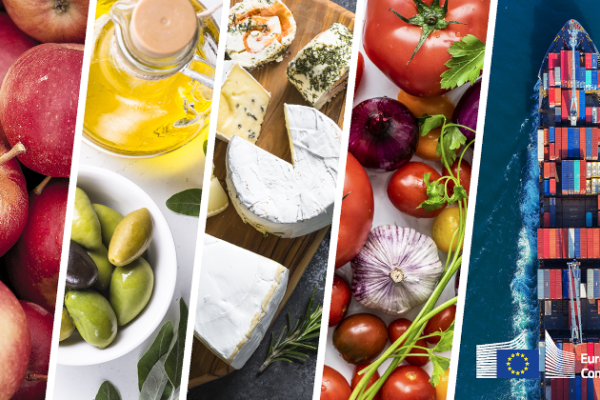CAP expenditure in the total EU expenditure
This graph shows the development of expenditure of the common agricultural policy (CAP) over the years as a share of the EU budget. The share has decreased over the past 40 years, from 73.2% in 1980 to about 24.6% in 2023. This decrease has continued, also following successive EU enlargements.
The downward trend in the CAP's share of EU spending is mainly due to CAP reforms and the growing share of other EU policies in EU expenditure. The strong decrease since 2021 is linked to additional overall EU expenditure for the Next Generation EU funds.
November 2024 - Sources: CAP expenditure: European Commission, Directorate-General for Agriculture and Rural Development (Financial Report). EU expenditure: European Commission, Directorate-General Budget.
CAP expenditure and CAP reform path
This graph shows the evolution of expenditure of the CAP and policy change.
- In the 1980’s, CAP spending was mainly on price support through market mechanisms (public purchases, also referred to as interventions, and export subsidies) which rose by the end of the decade due to agricultural surpluses.
- In the 1992 CAP reform, market price support was reduced and replaced by producer support in the form of direct payments. Spending on rural development measures also increased.
- Agenda 2000 continued the reform process. Rural development policy was introduced as a second pillar.
- With the 2003 reform, most direct payments were decoupled from current production as they were based on the farmer's historical receipts. Rural development expenditure continued to increase.
- The 2008 Health Check continued on the path of CAP reform, further reducing market support.
- The 2013 and 2023 reforms maintained the market-oriented reform path, while reinforcing the link of decoupled direct support to environmental and climate measures.
- Despite successive enlargements, overall CAP spending as a share of gross domestic product (GDP) has actually decreased from 0.54% in the 1990's to 0.36% in 2023. The departure of the UK resulted in a relative increase to 0.38% of EU GDP in 2021.
November 2024 - Sources: CAP expenditure: European Commission, Directorate-General for Agriculture and Rural Development (Financial Report). 2024 budget: Directorate-General Budget. GDP: Eurostat. Annual expenditure in current prices.
*2024: budget amounts
CAP expenditure and CAP reform path post-2013
This graph shows the evolution of expenditure of the CAP since 1980.
- As of 2015 direct payments include both compulsory schemes and voluntary schemes, depending on EU countries' choices.
- The shaded areas in the graph demonstrate the focus on environmental sustainability. They represent greening payments (2015-23) and eco-schemes (2024), as well as the share of the Rural Development envelope reserved for environmental and climate related actions.
- Expenditure for other market support in the past few years mainly includes expenditure for national wine programmes, producer organisations in the fruit and vegetables sector, the school fruit, vegetables and milk scheme, promotion of agri-food products, and apiculture.
November 2024 - 1980-2023: actual expenditure
Sources: CAP expenditure for the past years: European Commission, Directorate-General for Agriculture and Rural Development (Financial Report). 2024 budget: Directorate-General Budget. GDP: Eurostat and Global Insight.
*2024: budget amounts
Share of direct payments and total subsidies in agricultural factor income (2018-22 average)
Agricultural factor income represents income generated by farming which is used to remunerate:
- borrowed/rented factors of production (capital, wages and land rents), and
- own production factors (own labour, capital and land).
This concept of income is appropriate for evaluating the impact of changes in the level of public support (i.e. direct payments) on the capacity of farmers to reimburse capital, pay wages and rents as well as to reward their own production factors. This income indicator allows for comparison, as the share of own and external production factors often differs significantly between EU countries.
It can be noted that:
- Many EU producers are highly dependent on public support (for example: direct payments, rural development funds). The EU average share of direct payments in agricultural factor income in 2018-22 stood at 23%. However, this masked considerable differences between EU countries, ranging from 20% or less in Cyprus, Italy, Malta, the Netherlands and Spain, and to more than 40% in Estonia, Latvia, Lithuania and Slovakia. Taking all subsidies into account, total EU support in agricultural income reached 33% of agricultural income on average in the EU.
- This wide variation in the share of public support in agricultural income reflects the current distribution of support across EU countries (mainly based on differences in farm structure in each of them). This also reflects the specialisation of EU countries in different sectors and differences in the competitiveness of agriculture throughout the EU.
November 2024 - Sources: CAP expenditure: European Commission, Directorate-General for Agriculture and Rural Development (Financial Report), including Next Generation EU payments for 2021-22.
Related links
Presentation of the main economic and agricultural data for each EU country.
Factsheets on EU countries agri-food trade with the world, individual countries and selected regions.

